
Useful JLPT. If the followers increase, I’ll start building a community. Interested?
https://www.youtube.com/@dreamlivinginjapan
On the way home today. It’s raining.
On the way home today. It’s raining.
If you’re feeling a bit unsure, let’s take this opportunity to learn them right here and now!This time, six types of connections will appear.
Quizzes & Answers are in the following thread ⏬




If you’re feeling a bit unsure, let’s take this opportunity to learn them right here and now!This time, six types of connections will appear.
Quizzes & Answers are in the following thread ⏬
For those learning Japanese or preparing for the JLPT test, give it a try!
Answers are in the following thread ⏬


For those learning Japanese or preparing for the JLPT test, give it a try!
Answers are in the following thread ⏬
Japanese has two words for "tomorrow": あした (Ashita) and あす (Asu)! 🤔
Want to sound more natural in Japanese? Learn when to use each!
Answer⏬



Japanese has two words for "tomorrow": あした (Ashita) and あす (Asu)! 🤔
Want to sound more natural in Japanese? Learn when to use each!
Answer⏬
Let's learn conjunctions that are a bit tricky to differentiate!
There are also quizzes, so give them a try!
JLPT, Learn Japanese, Japanese Learning, 日本語を学びましょう。

Let's learn conjunctions that are a bit tricky to differentiate!
There are also quizzes, so give them a try!
JLPT, Learn Japanese, Japanese Learning, 日本語を学びましょう。
Are you really using いたします and します correctly?
In just 3 minutes, learn key tips to make your politeness and impression significantly better!
Continuing in the following reply ⏬
#jlpt #learnjapanese #japaneselearning

Are you really using いたします and します correctly?
In just 3 minutes, learn key tips to make your politeness and impression significantly better!
Continuing in the following reply ⏬
#jlpt #learnjapanese #japaneselearning
Someday, you too might find yourself heading home while looking at this scenery. Or perhaps that day has already come true?
Since the JLPT test has just finished, I hope this view can bring some comfort to you, who worked so hard, even if it’s just for today.
Someday, you too might find yourself heading home while looking at this scenery. Or perhaps that day has already come true?
Since the JLPT test has just finished, I hope this view can bring some comfort to you, who worked so hard, even if it’s just for today.
Mastering the Proper Usage of 'Shimasu' vs. 'Sasete Itadakimasu'
Continuing in the following reply ⏬
#jlpt quiz #learnjapanese #keigo

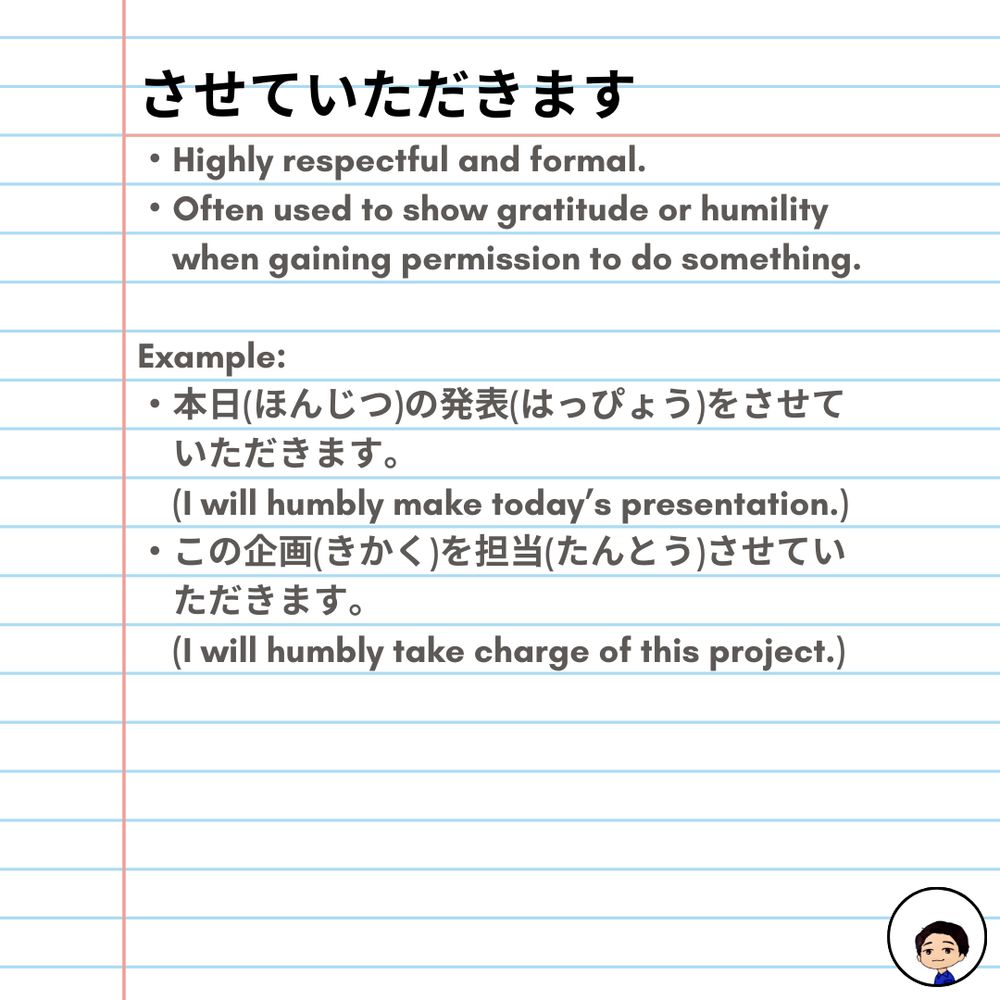

Mastering the Proper Usage of 'Shimasu' vs. 'Sasete Itadakimasu'
Continuing in the following reply ⏬
#jlpt quiz #learnjapanese #keigo
伺う: Humble & formal – perfect for polite settings.
訪ねる: Neutral – for physical visits like museums.
聞く: General – for casual or polite use.
Continuing in the following reply ⏬
#jlpt #japanese #japaneselearning

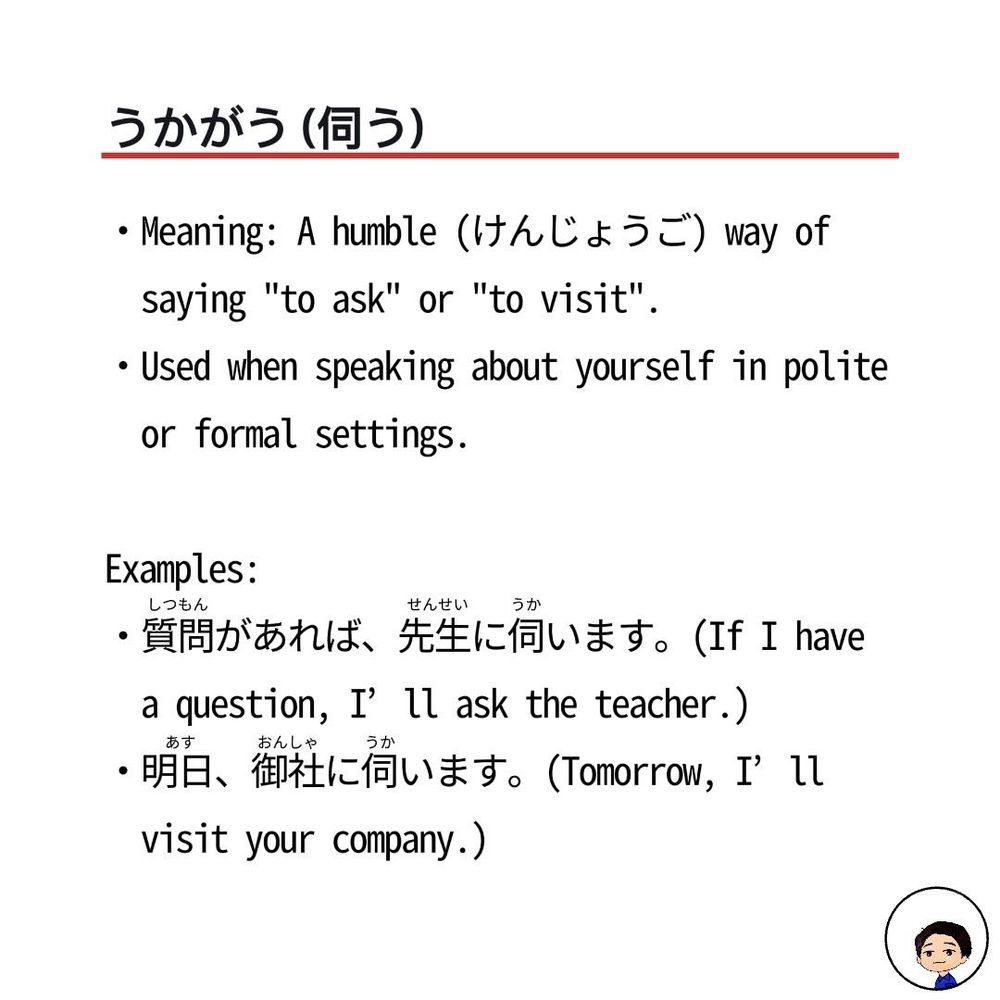

伺う: Humble & formal – perfect for polite settings.
訪ねる: Neutral – for physical visits like museums.
聞く: General – for casual or polite use.
Continuing in the following reply ⏬
#jlpt #japanese #japaneselearning
There’s also a quiz, so make sure to try solving it!
Continuing in the following reply. ⏬


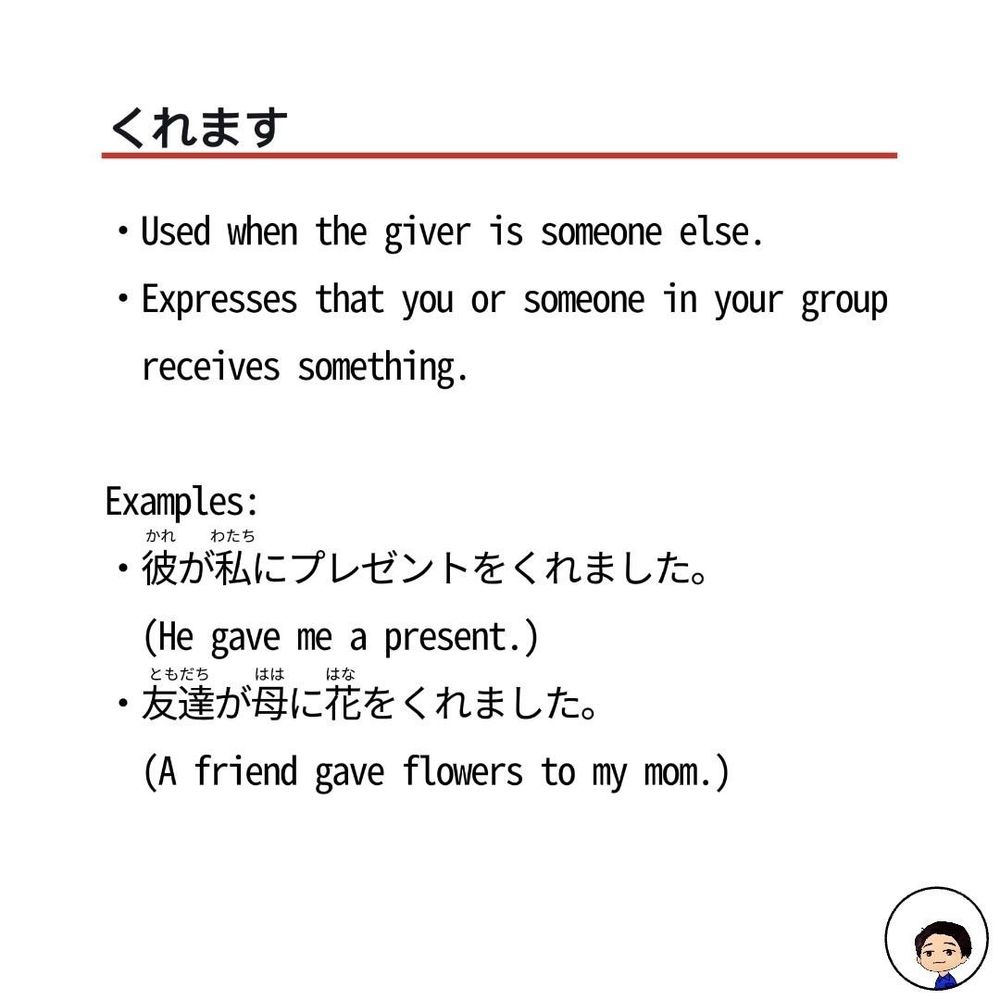
There’s also a quiz, so make sure to try solving it!
Continuing in the following reply. ⏬
For those learning Japanese or preparing for the JLPT test, give it a try!
This might be a bit difficult this time.
Answers are in the following thread ⏬



For those learning Japanese or preparing for the JLPT test, give it a try!
This might be a bit difficult this time.
Answers are in the following thread ⏬
For those learning Japanese or preparing for the JLPT test, give it a try!
How many can you get right?
Answers are in the following thread ⏬

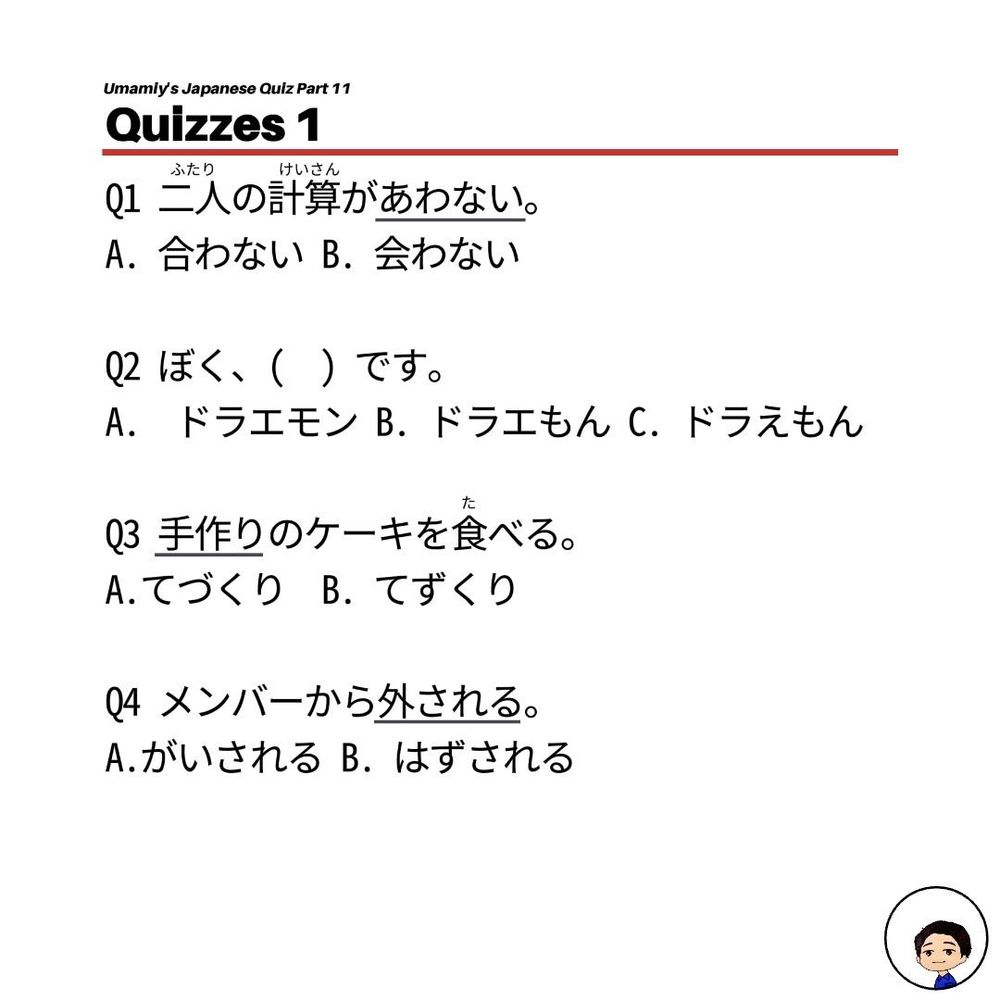

For those learning Japanese or preparing for the JLPT test, give it a try!
How many can you get right?
Answers are in the following thread ⏬
Today, let’s learn the difference between 早い (hayai) and 速い (hayai)!
Both are pronounced the same, but their meanings and usage differ.
There’s a quiz at the end, so give it a try!

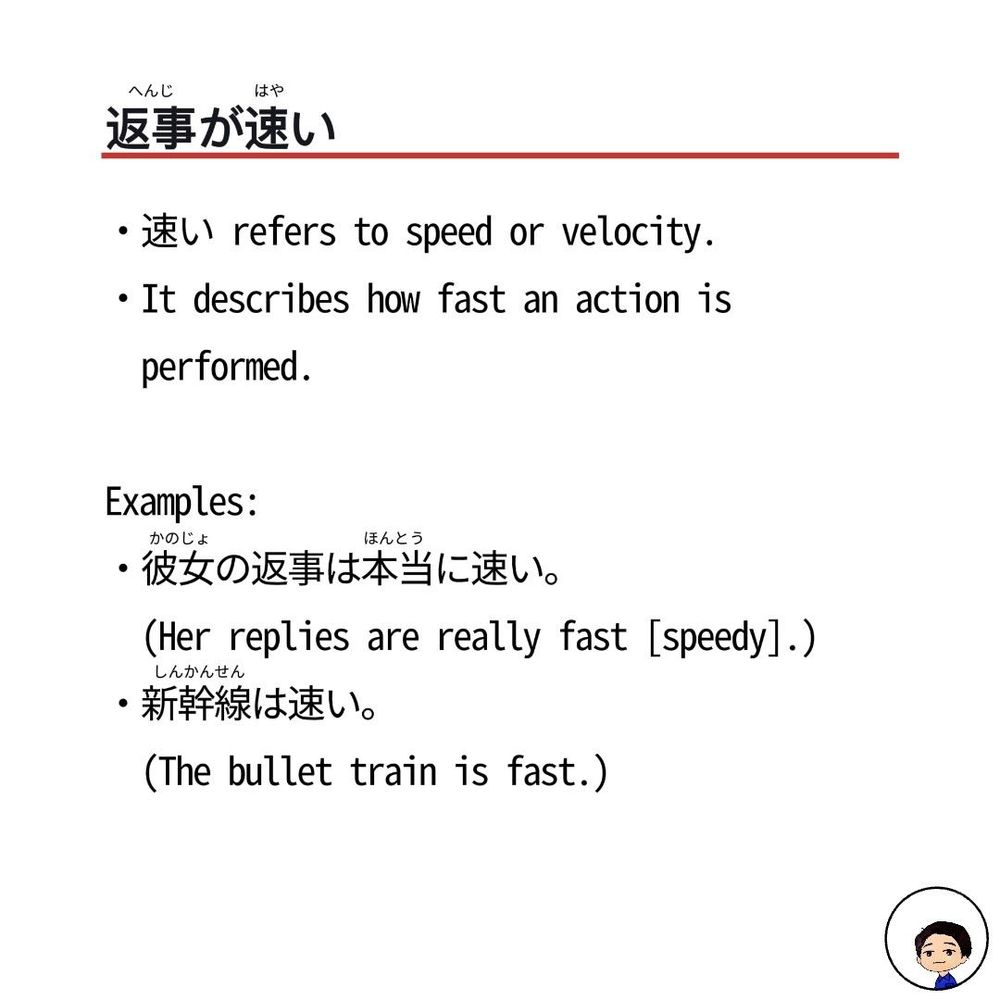

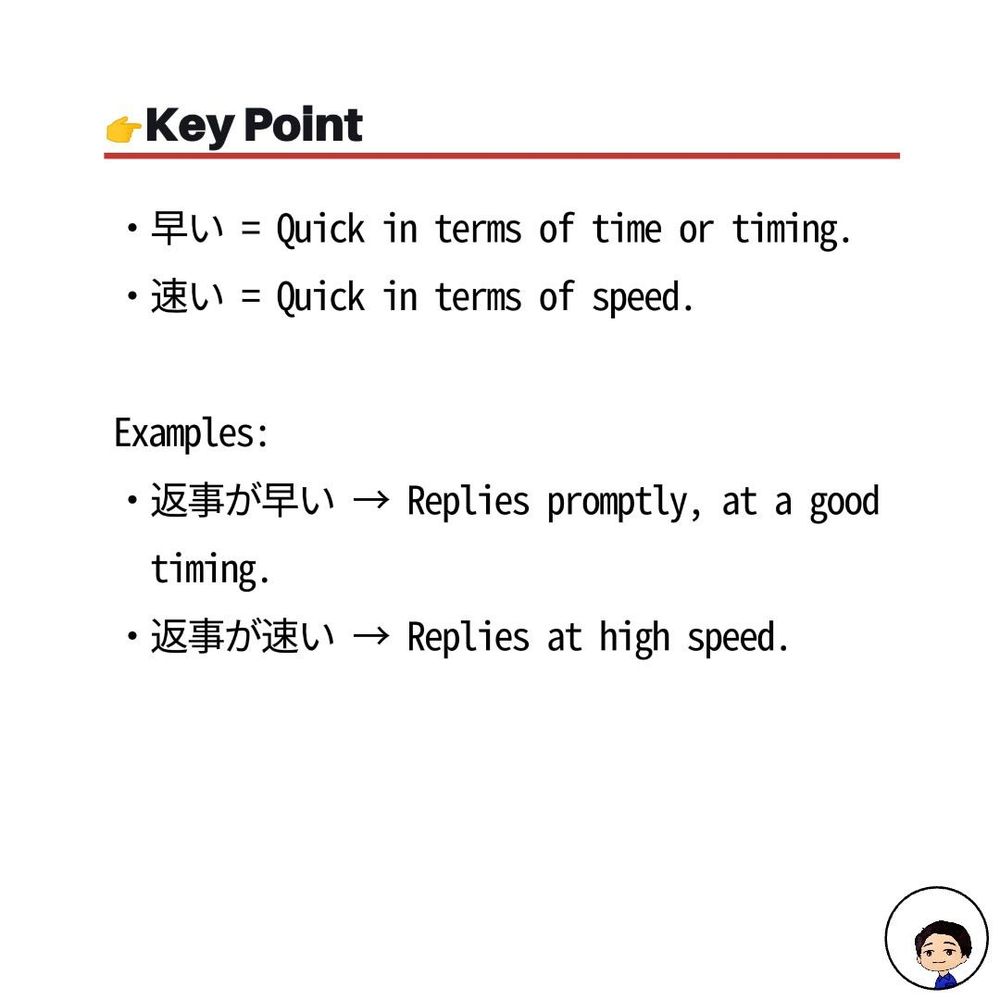
Today, let’s learn the difference between 早い (hayai) and 速い (hayai)!
Both are pronounced the same, but their meanings and usage differ.
There’s a quiz at the end, so give it a try!
Do you know the difference between these two ways to say "ask"?
Let’s explore the polite nuances of Japanese!
Q1 (N5): 彼に( )してみます。
Q2 (N4): 上司に時間を( )か?
Q3 (N3): 取引先に詳細を( )予定です。
Q4 (N2): 先生に( )ことで、疑問が解決した。

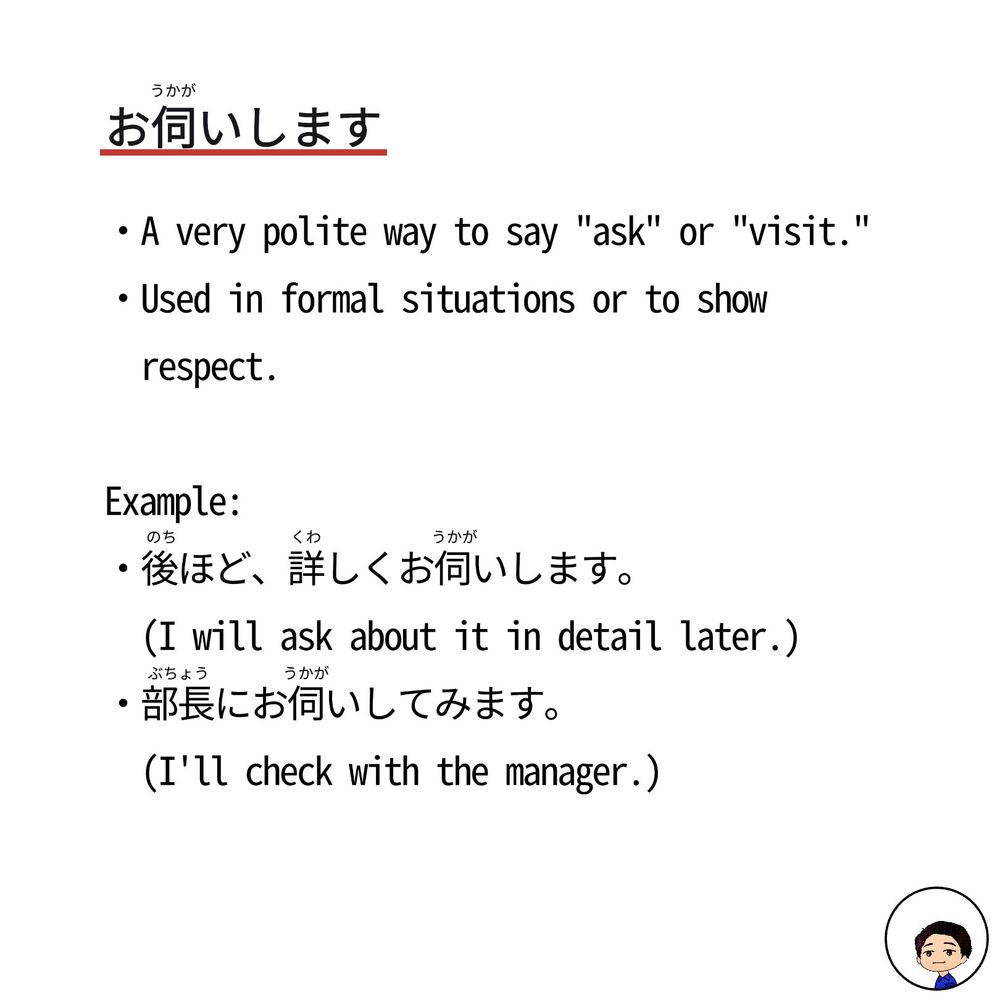


Do you know the difference between these two ways to say "ask"?
Let’s explore the polite nuances of Japanese!
Q1 (N5): 彼に( )してみます。
Q2 (N4): 上司に時間を( )か?
Q3 (N3): 取引先に詳細を( )予定です。
Q4 (N2): 先生に( )ことで、疑問が解決した。
していただく vs いただく
What’s the difference?
Both are polite, but they’re used in slightly different contexts.
Let’s break it down so you can use them correctly and sound natural in Japanese!
していただく vs いただく
What’s the difference?
Both are polite, but they’re used in slightly different contexts.
Let’s break it down so you can use them correctly and sound natural in Japanese!
Please answer the quiz about what Umamiy-sensei’s assistant talked about.
Please answer the quiz about what Umamiy-sensei’s assistant talked about.
Learn kanji through stories—fun and less intimidating! Perfect for JLPT prep and keeping your motivation high.
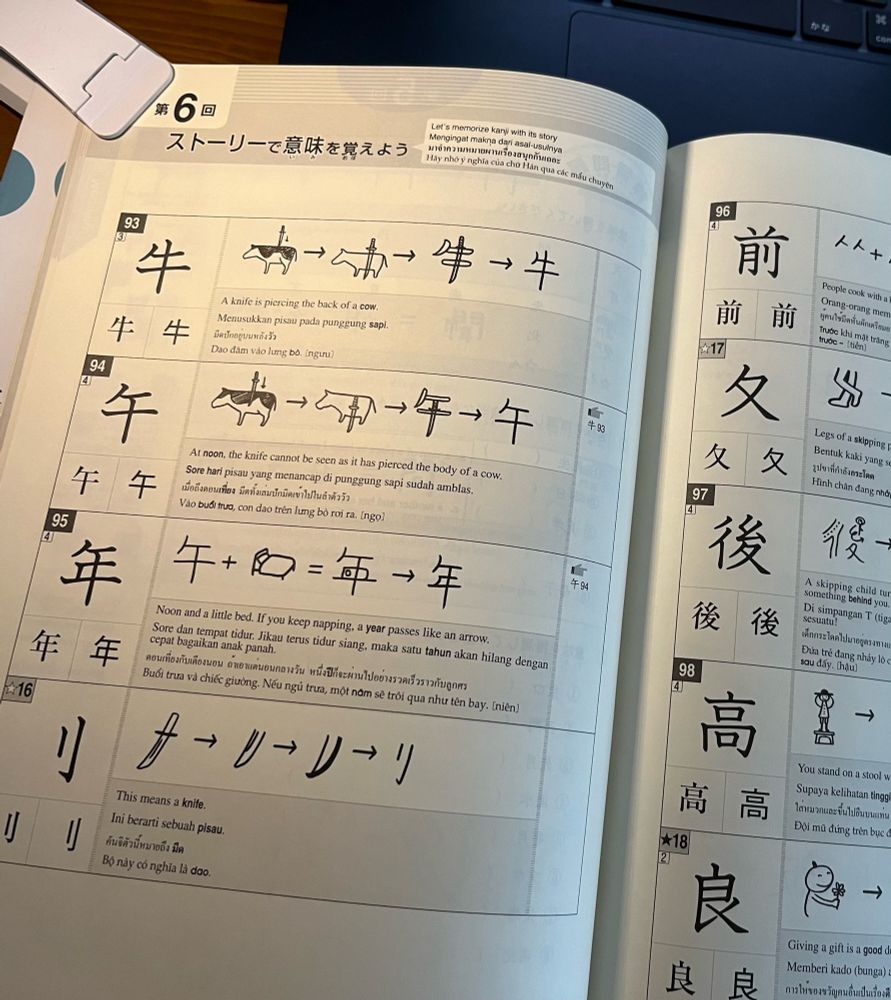
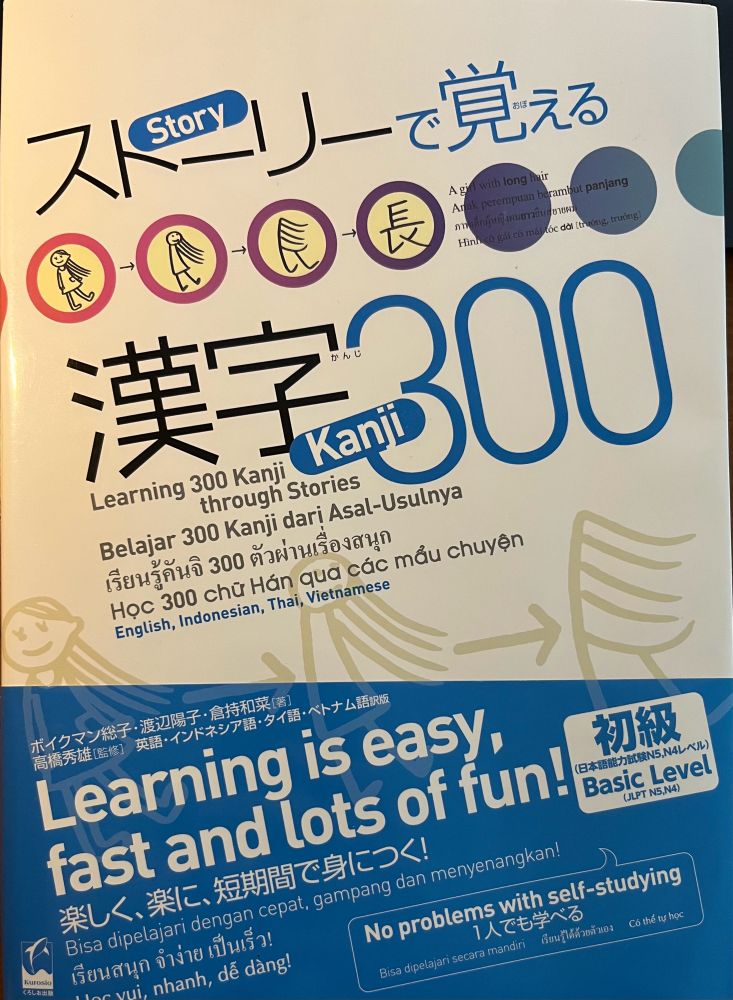
Learn kanji through stories—fun and less intimidating! Perfect for JLPT prep and keeping your motivation high.
Carefully Selected Anime for Japanese Language Learning by JLPT Level
Carefully Selected Anime for Japanese Language Learning by JLPT Level
Let’s follow the 4W template and say “Tomorrow, I will work at the office.” in Japanese.
Please reply with your answer in text, and Umamiy-sensei will check it for you!
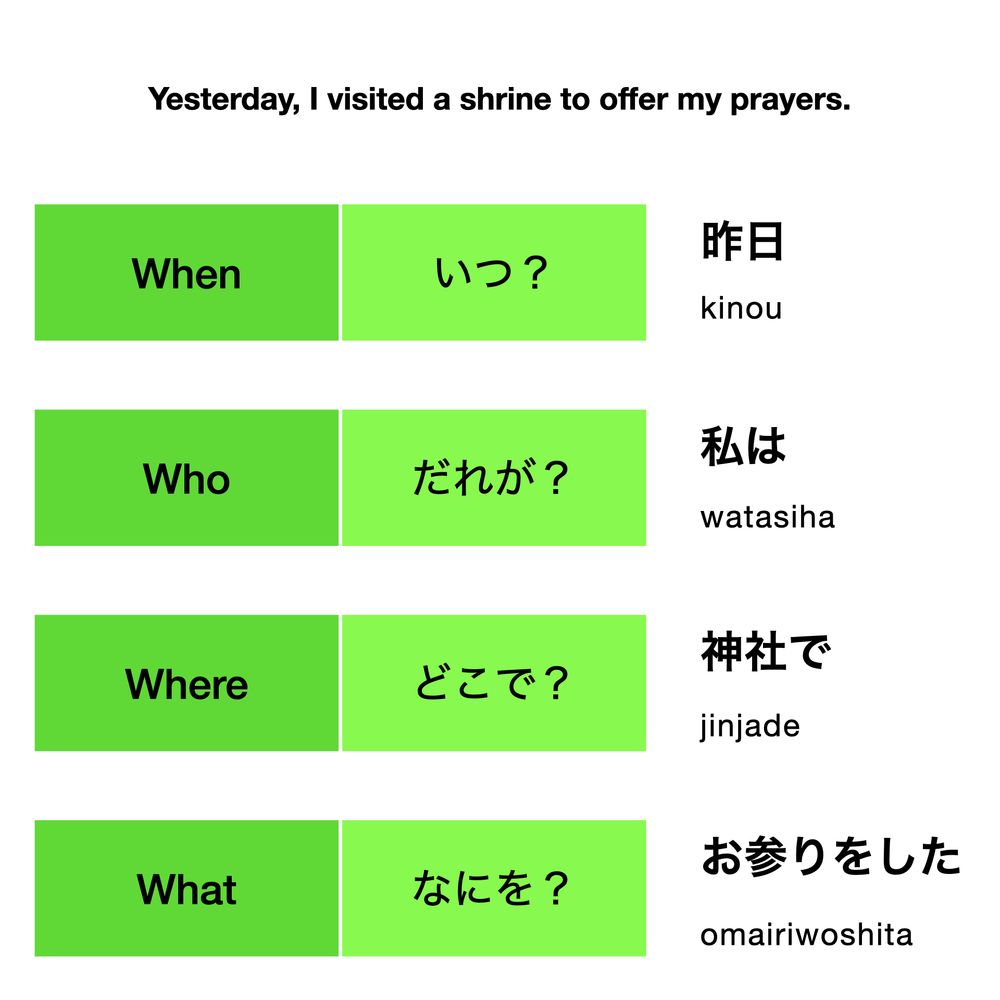
Let’s follow the 4W template and say “Tomorrow, I will work at the office.” in Japanese.
Please reply with your answer in text, and Umamiy-sensei will check it for you!

